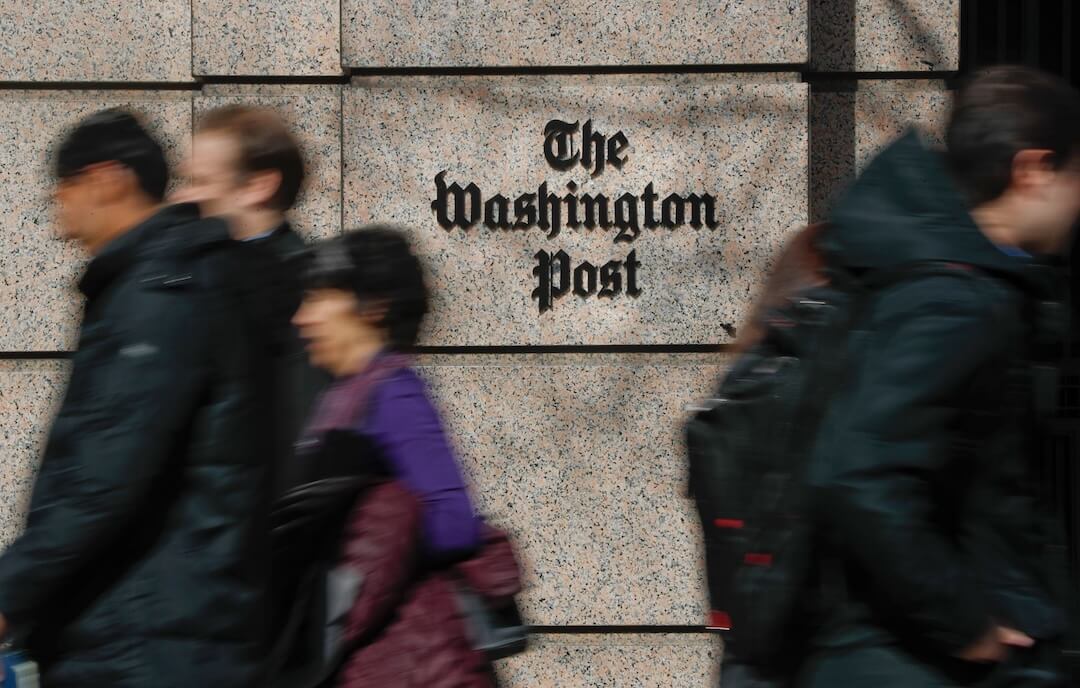Watergate. Spying by the National Security Agency. Bungled protection by the Secret Service.
These stories have two things in common: Each were major, consequential pieces of journalism about the federal government that got big results. And none of them were broken by the White House press corps.
With less than two weeks before Donald Trump is inaugurated as the nation’s 45th president, news organizations have begun plotting their coverage of the new administration. Several of the major D.C. outlets — The New York Times, The Washington Post and Politico — are investing unprecedented resources into coverage of the White House, assigning more reporters there than ever before.
The New York Times has six reporters assigned to the White House, the biggest contingent in its 150-year history. The Washington Post has also dispatched six White House reporters. Politico, not to be outdone, has assigned seven reporters, “the largest…in its 10-year history,” according to the D.C. news outlet.
This means, when Donald Trump comes to D.C. later this year, he’ll be accompanied by perhaps the largest contingent of journalists ever to cover the White House. But is that really the best strategy for covering the president?
Probably not, says W. Joseph Campbell, a professor at American University and the author of several books on journalism.
“Given the tightly regulated nature of the White House press corps, it’s probably a safe bet the most adversarial, or most embarrassing, stories about the next administration won’t come from reporters assigned to cover the White House,” Campbell said. “The grinding, over-rated, and even less-than-glamorous nature of the White House assignment has been well-chronicled, notably by members of the White House press corps themselves.”
As evidence, Campbell cited a 2014 survey by members of the White House press corps, who alternatively called their assignment “the worst beat in politics,” “miserable” and “claustrophobic.”
“It’s…like covering a horse race from inside a horse,” wrote Glenn Thrush, now a White House reporter for The New York Times. “Better to come in and out as an investigative reporter, a congressional hack, or tackle a special policy area.”
The confined, ritualistic nature of the White House beat makes it a difficult slog for even the most adversarial reporter. Dozens of journalists jockey for the same stories, and much of the news that comes from the White House is made through formal announcements. The ritual of briefings and pooling — following the President-elect and reporting on his movements — occupy time that might otherwise be spent on enterprise. Moreover, the White House is full of political appointees whose primary concern is to shape the message that emanates from the building every day.
And in recent years, the value of White House reporting has been undercut somewhat by the Obama administration. Rather than using news organizations to get the message out, Obama officials have used non-traditional media — Twitter, Facebook and YouTube — to communicate with the public. Crucial speeches are livestreamed by the administration, photos are taken in-house and the State of the Union Speech — long an insider-y staple of Beltway journalism — has been posted on Medium since 2015.
Expect that change to accelerate in a Trump administration. The president-elect has proven a deft user of social media, consolidating support and engaging with his fans on non-traditional media platforms.
In the run-up to the election, his campaign broadcast its own nightly news show from Trump Tower that featured spokespeople and Trump-friendly guests. Trump’s Twitter feed remains a powerful tool for making an end-run around news organizations, and his fledgling administration has published several videos directly to YouTube during the transition.
Meanwhile, it’s unclear how much access reporters will be given to administration officials under a president-elect that frequently undermines the press. During the campaign, Trump blacklisted news organizations such as The Washington Post, BuzzFeed, Politico and The Huffington Post, choking off access to rallies and other campaign events. He has ditched the press pool several times during the transition and often lashes out at news organizations for critical coverage.
And the fate of a basic tenet of the White House beat — the daily briefing — remains in doubt. Trump officials have indicated changes are coming to the White House briefing room, but they haven’t made any announcements yet.
There is a good case for maintaining a strong presence in the White House, of course. Even though many of the toughest political stories come from outside the West Wing, White House reporters “still have an obligation to provide appropriate scrutiny of a president’s words and actions,” said Peter Baker, a White House reporter for The New York Times.
“Even in day-to-day coverage, accountability is an important part of what we do,” Baker said. “And I think most White House reporters take that responsibility very seriously.”
If editors were convinced that filling the White House briefing room with ever-more reporters wasn’t an ideal strategy, they should take steps to make their coverage more effective. The first, as suggested by New York University professor, Jay Rosen: “Switch to an ‘outside in’ coverage approach.”
This means, essentially, concentrating efforts on the people and institutions on the margins of Trump’s administration. Or, as Rosen put it: “Domestically, it involves mining sources in the agencies and civil service rather than the people perceived as ‘players.’ (As is commonly done in investigative journalism.)”
This kind of thinking paid dividends during the campaign. The biggest stories — Hillary Clinton’s email disclosures, Donald Trump’s uncharitable charity, his boasts of sexual assault — came from reporters who weren’t embedded with the campaigns.
The Washington Post seems to be heading in this direction already. David Fahrenthold, one of the leading sleuths of the 2016 campaign, will cover several federal agencies in the Trump administration, including the USDA, the Office of Management and Budget and the Department of Labor. In a tell-all for The Washington Post, Fahrenthold said he would “seek to cover Trump the president with the same vigor as I scrutinized Trump the candidate.”
But I think a more dramatic re-envisioning of the White House beat is in order. The job was changing before Trump took office, and the election of a new president gives news organizations a chance to re-evaluate and revitalize a staple of American journalism.
They should do it now, on their terms, before the changing tides of politics and media do it for them.






